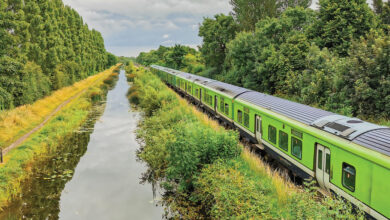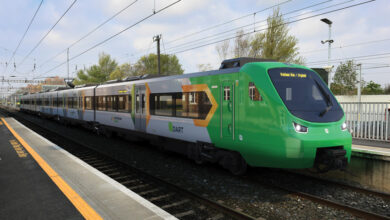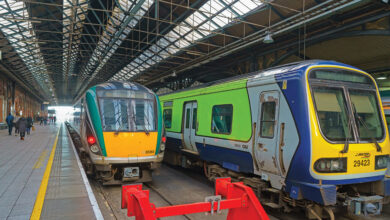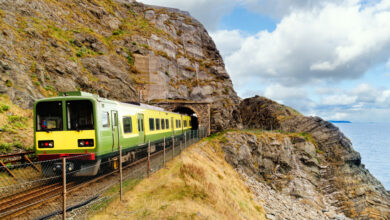Crucial decade ahead for the future of rail
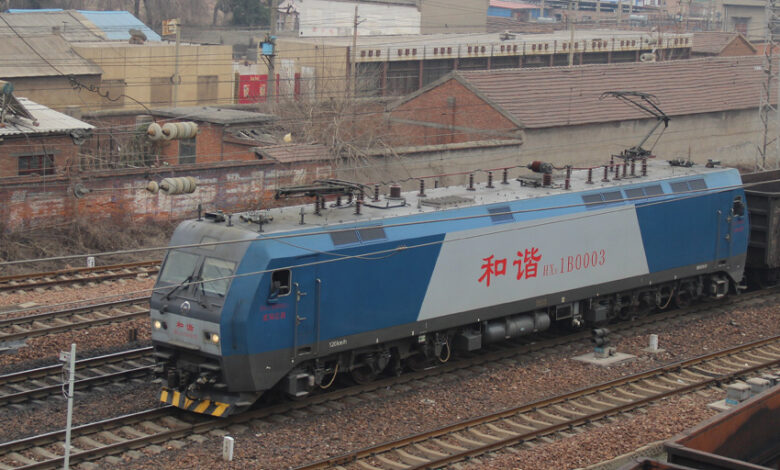
Emissions from rail have risen by an annual average of 0.6 per cent in the past two decades globally, the International Energy Agency (IEA) reports. In order to be on track for 2050 net zero targets, these levels will need to decrease by over 4 per cent annually.
The challenge for global rail systems is that while the IEA’s Tracking Clean Energy Progress 2023 stresses a need to decarbonise rail travel, its 2019 Future of Rail report predicts major upticks in the use of rail for both passenger and freight activity. The IEA states that the ever-growing demand for public transport “carries with it greater energy demand and increased CO2 emissions and atmospheric pollutants”, but that “greater reliance on rail has the potential to cut that growth”.
Rail is one of the most energy efficient modes for transport; at the time of the IEA’s 2019 report, it represented 8 per cent of global passengers and 7 per cent of global freight, but only accounted for 2 per cent of global transport emissions. Comparatively, in 2022, rail accounted for 7 per cent of global passenger kilometres and 6 per cent of tonne kilometres, but only accounted for 1 per cent of transport emissions. Three-quarters of rail activity was electrified by 2019, an increase on 60 per cent in 2000, and moves to further electrify rail travel have progressed notably since then.
By the end of 2022, China’s railway network had reached 155,000km, with 42,000km of that made up by high-speed electric railways. China’s is the largest high-speed rail system in the world, and it has grown by a factor of 100 in the past 20 years, with expectations to reach 50,000km of high-speed rail by 2050. A partnership between the Japanese firm Hitachi and Italy’s Trenitalia produced the FrecciaRossa 1000 high-speed train in 2015, which now operates in Italy, France, and Spain. The partnership unveiled a new high-speed hybrid train in 2022 that switches between battery, electric, and diesel fuel sources and can thus operate on both electrified and non-electrified rail lines.
A major shift is also underway in India, which is aiming for 100 per cent track electrification by 2024; by the end of 2022, the electrification rate stood at 80 per cent, compared to 45 per cent in 2015. Progress has also been made in Africa, which stood as the continent with the lowest rate of rail electrification with just 28 per cent in 2016. In the same year, a 753km line powered by hydroelectricity between Ethiopia and Djibouti was opened, the first modern electrified railway in east Africa.
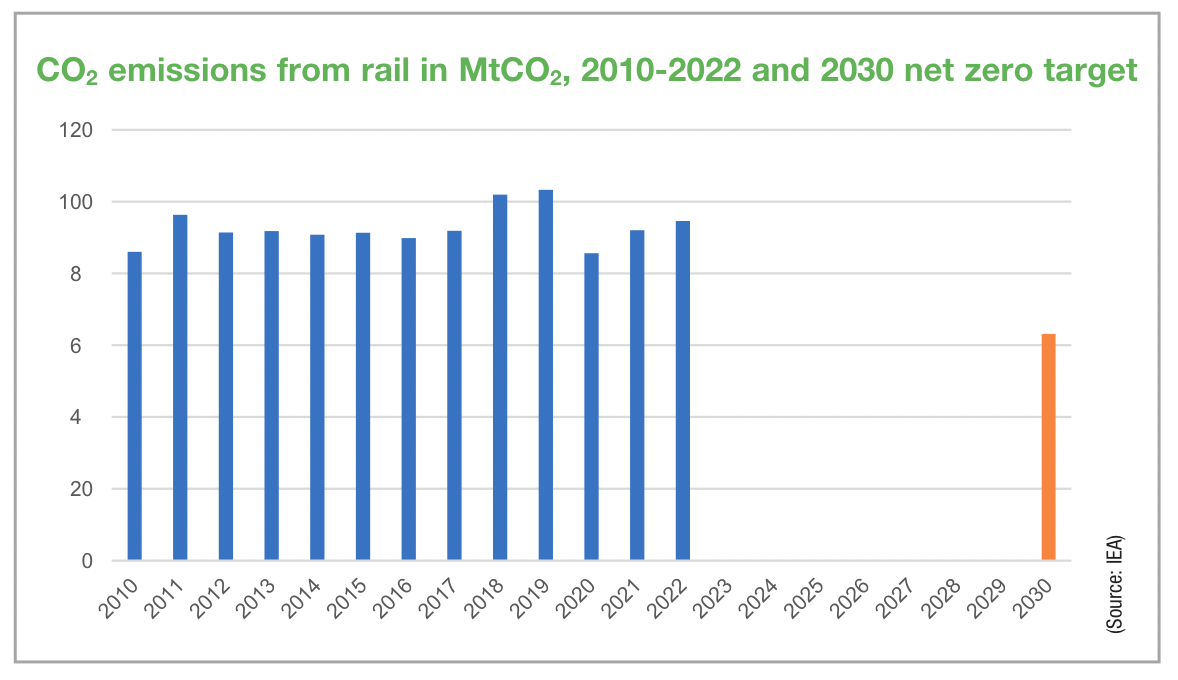
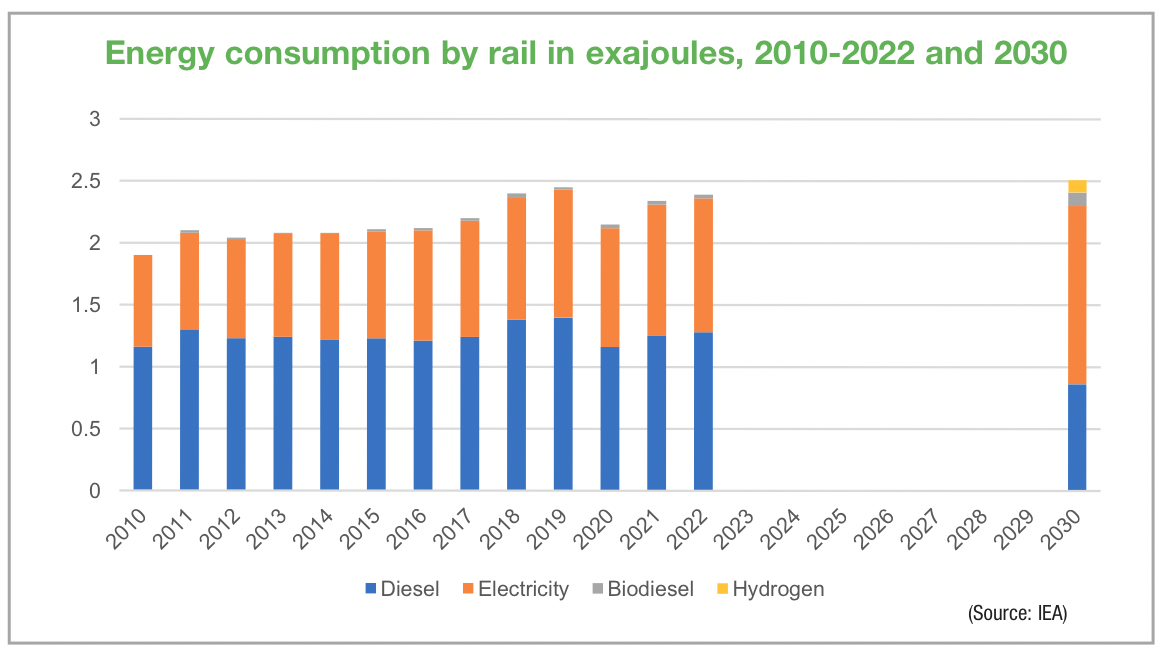
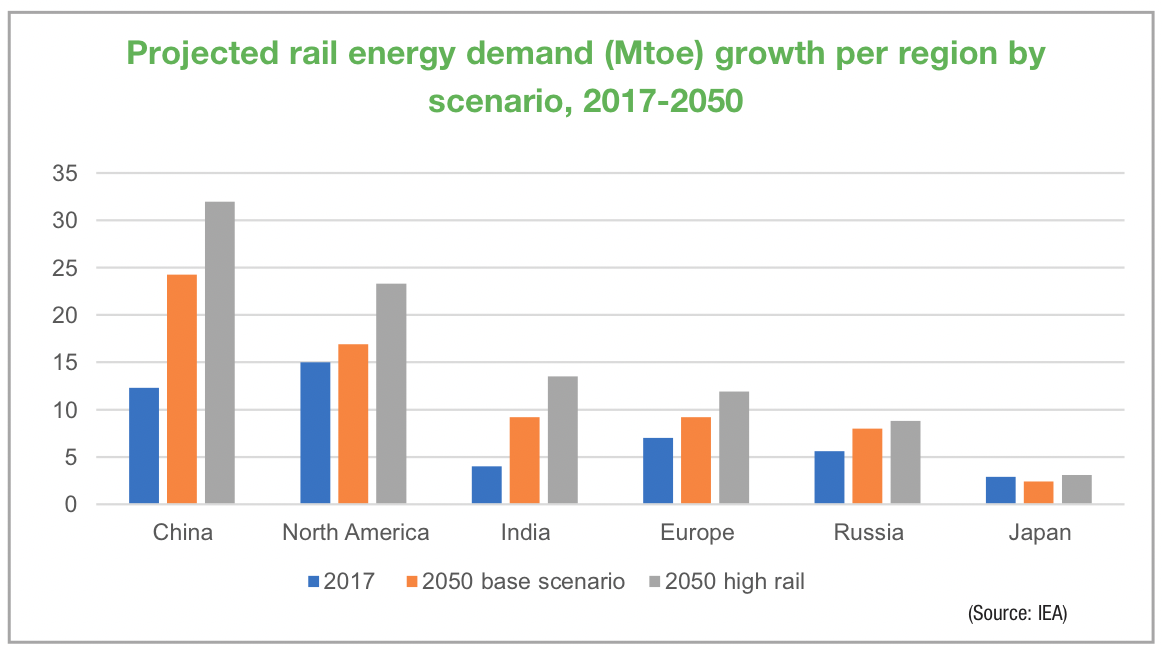 Electric rail is crucial for the decarbonisation of rail travel as it does not emit any direct CO2 emissions. With this in mind, it is welcome news that electric rail accounted for 85 per cent of passenger rail activity and 55 per cent of freight rail movement in 2022. Urban rail networks such as metro and light rail are known to have significantly lower emissions profiles due to their reliance on electricity as a power source, their lower friction losses, and their higher occupancy rates.
Electric rail is crucial for the decarbonisation of rail travel as it does not emit any direct CO2 emissions. With this in mind, it is welcome news that electric rail accounted for 85 per cent of passenger rail activity and 55 per cent of freight rail movement in 2022. Urban rail networks such as metro and light rail are known to have significantly lower emissions profiles due to their reliance on electricity as a power source, their lower friction losses, and their higher occupancy rates.
The IEA states: “Expanding rail networks and their use will be important for achieving emission reductions to get on track with the net zero energy scenario. European players are planning important investments in rail transport to make it more appealing to travellers, especially as an alternative to short-haul flights.” While Ireland’s rail developments in the decades to come will not be pan-European, the prospect of initiatives such as DART+, the Luas expansion, MetroLink, and the electrification of rail lines such as the Enterprise service between Belfast and Dublin places Ireland in line with other states seeking to simultaneously increase capacity and decrease emissions.
IEA data shows global CO2 emissions from rail to have peaked in 2019 at 103.38 MtCO2eq, having started the decade at 86.04 MtCO2eq in 2010. Following a significant fall in 2020, likely caused by Covid-related cessation of services, the emissions level increased again in 2021 and 2022, reaching 94.64 MtCO2eq in 2022. The IEA states that this figure must fall to 63.22 MtCO2eq by 2030 if rail transport is to be on track for its part in the achievement of net zero emissions by 2030. Achieving this reduction would require a fall of 31.42 MtCO2eq or 33.2 per cent overall in the eight years from 2023 until the end of 2030, an annual average decrease of 3.9 MtCO2eq or 4.1 per cent.
Such an annual decrease rate would not be unprecedented; the 2012 level of 91.42 MtCO2eq was a fall of 4.93 MtCO2eq on the previous year. What would be unprecedented would be consecutive years of emissions falling. Every year in the 2010s when rail emissions totals decreased (2012, 2014, and 2016) was followed by a year in which emissions increased.
Key to this decarbonisation will be electrification and diversity of non-electric fuel sources in rail. While electric rail accounts for the vast majority of global rail, diesel still accounts for more consumption in exajoules according to IEA data for 2022. The same data does show that diesel consumption increased by 10.3 per cent from 2010 to 2022, while electricity consumption in rail increased over the same period by 45.9 per cent.
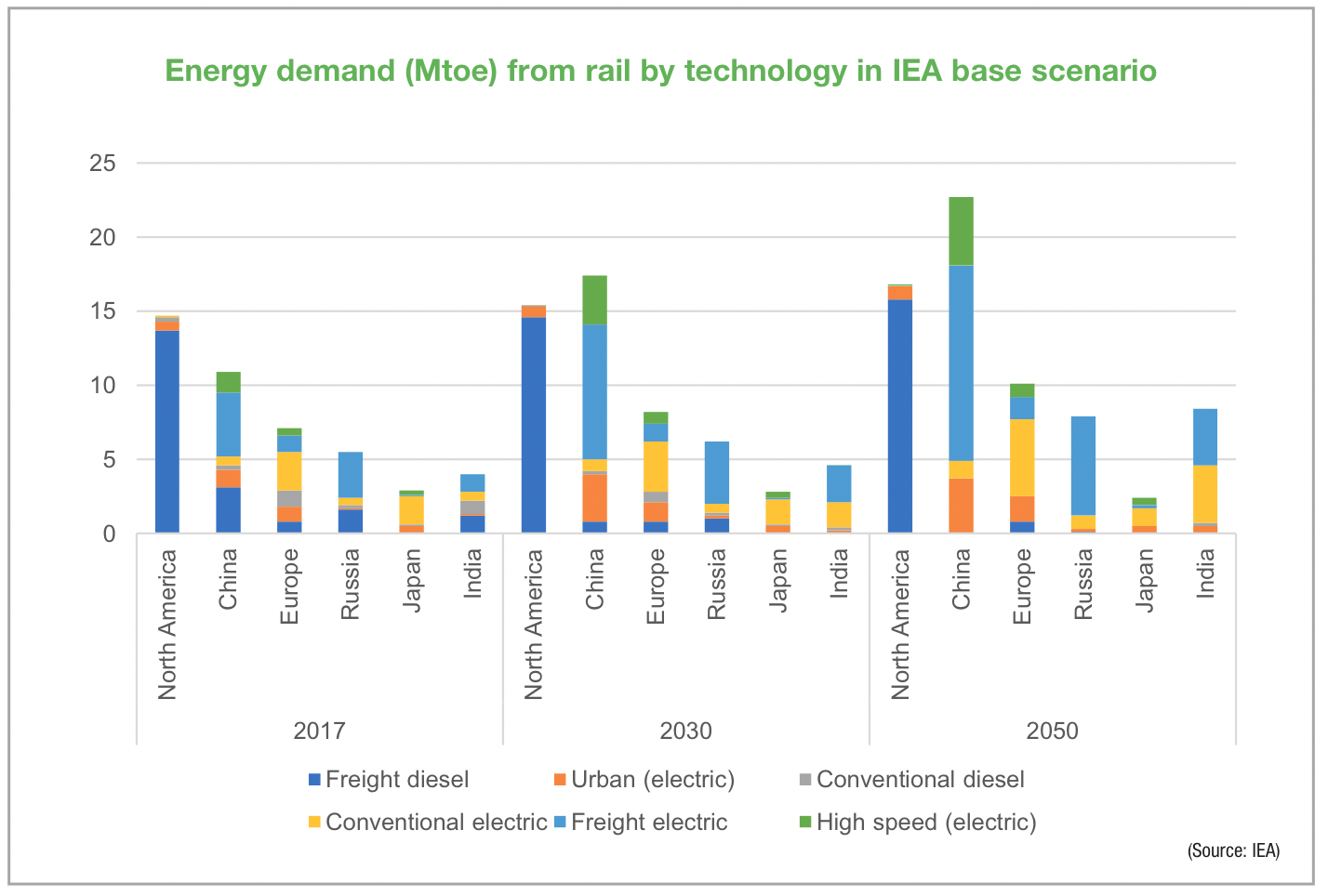
In order to fall in line with 2030 targets for net zero by 2050, the IEA predicts that there will be a total of 2.51 exajoules consumed by rail. 1.44 of this will be electricity, which would require an increase in its consumption by exactly one third from 2022 levels. With small amounts of consumption to be made up by biodiesel and hydrogen, diesel will still play a role in 2030, although the 0.86 exajoules envisioned by the IEA would be a decrease of 32.8 per cent from 2022 levels.
The IEA suggests four recommendations to move towards these goals. The first is aimed at policymakers, suggesting that they “adopt holistic and comprehensive policies, including ‘push’ and ‘pull’ fiscal instruments, and set clear targets to foster rail competitiveness and induce modal shift”. The final three recommend that the private sector upgrade rolling stock, raise efficiency, enhance digital technologies, and integrate renewables; enhance rail networks through integrated planning; and further electrify, improve efficiency, and invest in digital technologies.

